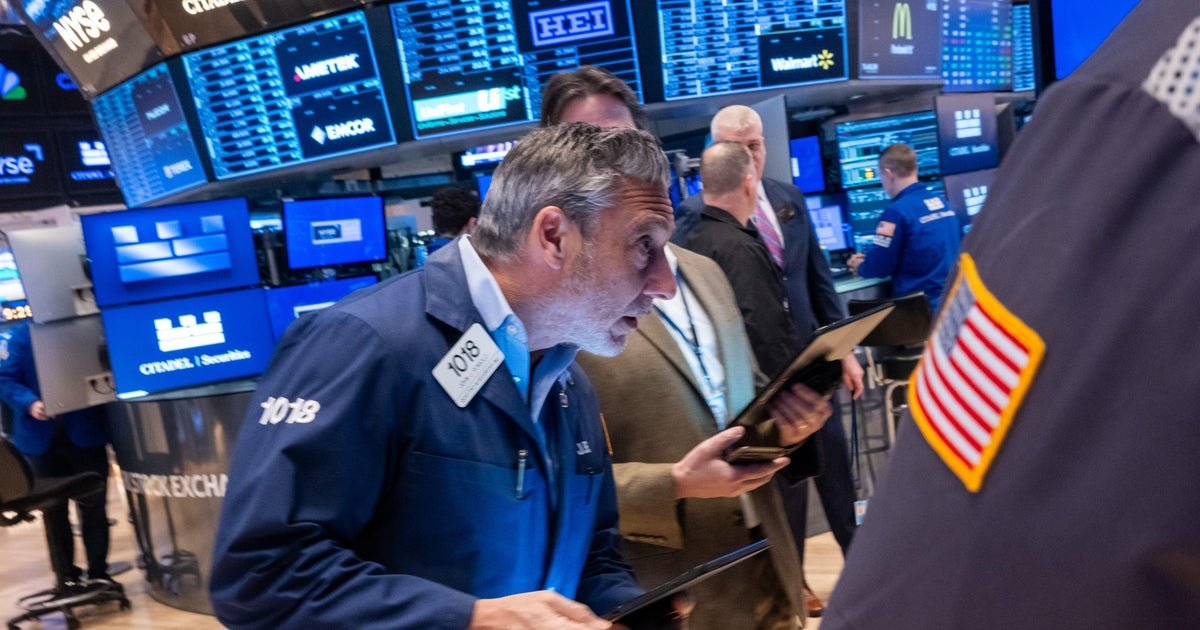The S&P 500 is approaching a record high, marking a stunning turnaround from April when stocks nosedived after President Donald Trump unveiled a flurry of tariffs on so-called “Liberation Day.”
The S&P 500 has jumped 23% since closing at its 2025 low on April 8. On Thursday, it closed up 9 points, or 0.8%, to 6,141, just three points shy of its record closing high of 6,144 on February 19. The tech-heavy Nasdaq also flirted with its previous record of 20,174, set in December 2024, inching up 195 points, or 1%, on Thursday to close at 20,167.
The market could surpass those previous records on Friday or early next week, analysts told CBS MoneyWatch.
Wall Street has largely shrugged off concerns about tariffs and geopolitical tensions since early April, although there have been periods of volatility along the way. While these issues continue to pose risks to the U.S. economy, many investors are confident they’ll skirt any major market downturns, at least in the short-term, experts say.
“We hear all those narratives of what could go wrong, or what is going wrong,” said Bret Kenwell, an investment analyst at eToro. “But the market doesn’t seem to care. It’s looking forward. It’s plowing ahead, and it’s been trading really well.”
Still, Wall Street is awaiting more news on Mr. Trump’s tariffs, with a 90-day pause on his so-called reciprocal tariffs slated to end on July 9. And Federal Reserve Chair Jerome Powell warned last week that tariffs are likely to drive up inflation later this year, slowing economic growth.
Here are three reasons why experts say the market is rebounding.
Easing concerns about tariffs
Since April, the markets have whipsawed in response to the Trump administration’s on-again, off-again tariff policies.
While uncertainty around the impact of the levies remains, analysts say investor concern has faded as trade negotiations have entered a quieter phase after the Trump administration struck a deal with China earlier this month.
“We’ve gone into a period where we haven’t had a lot of disruptive noise coming either out of Washington or among our trading partners,” said Mark Luschini, chief investment strategist at Janney Montgomery Scott. “I think that’s helped to sort of cool anxieties, at least for the time being.”
The next benchmark will be July 9, when the president’s 90-day pause on reciprocal tariffs comes to an end. If the U.S. slips back into a more intense trade situation, the markets could show more volatility, Kenwell said.
So far, data suggests a resilient economy, although some Wall Street economists have warned the economy may soon face headwinds.
A report from the Wells Fargo Investment Institute released Thursday predicts that the brunt of the tariffs impact will hit in the third quarter. The analysis also warns the tariffs could leave the U.S. with “historically high and potentially debilitating levies.”
Optimism about tech stocks
Technology stocks, dominated by the so-called “magnificent 7” — consisting of Nvidia, Apple, Amazon and other tech giants— have been integral in driving the market rebound, analysts say.
Tech has become the best performing sector so far in the second quarter, a period which spans April through June. Financial companies such as banks and insurance firms have also been performing well, he added. According to Kenwell, those two sectors alone represent over 40% of the S&P 500.
Chip company Nvidia closed at a record high on Thursday, allowing the company to retake its crown as the world’s most valuable company. The tech giant’s stock has soared almost 62% since the market’s 2025 bottom on April 8.
AI-powered companies have gained momentum in recent weeks, with Micron Technology, which sells computer memory and data storage, beating earnings expectations for the latest quarter, Vital Knowledge analyst Adam Crisafulli pointed out.
Investors have gravitated towards tech stocks, Luschini said, given their high free cash flow and potential for strong earnings growth.
“I think investors are looking at them as sort of a bastion of safety,” he said.
Signs of a potential rate cut
Investors have been buoyed by forecasts for more rate cuts from the Federal Reserve.
At the Fed’s June meeting, the central bank said it would hold rates steady but pencilled in two cuts for the remainder of the year. A rate cut could come as soon as the next meeting, July 29-30, but it’s more likely it will happen during the September meeting, experts say.
“I think investors are kind of looking through the next several months to a period in which we’re likely to see more accommodative monetary policy,” said Luschini.
